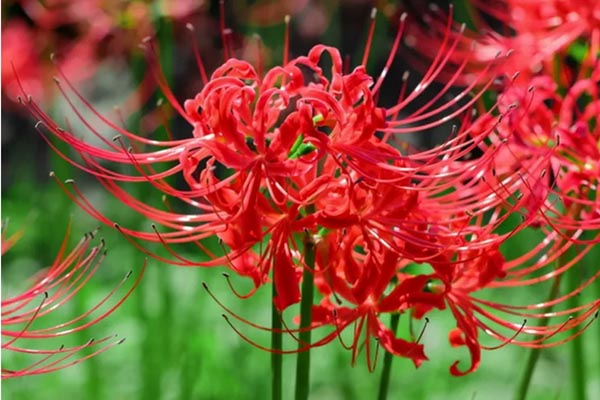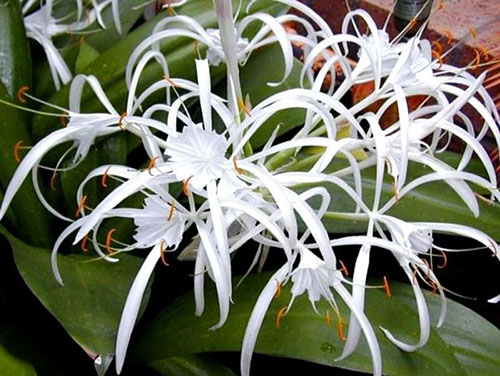Spider Lily
Spider lily is the common name of numerous plants. The most popular indoor plants known by this name: Lycoris radiata, Hymenocallis littoralis
Lycoris radiata (Spider Lily)
- Common Name: Spider Lily
- Botanical Name: Lycoris radiata
This is a relative of the amaryllis and is also easy to grow indoors. Growing from a bulb, this exotic lily grows well in a pot on a sunny windowsill.
Spider lilies are known for their striking blooms. They feature thin, delicate petals and long stamens, which result in flowers that resemble spider legs—hence the plant's common name. The blooms stretch about 6 inches across and emerge on a tall, naked stem in the late summer to fall. Blue-green foliage follows after the flowering is finished and remains until spring.
Spider Lily (Lycoris radiata) Care

Hymenocallis littoralis ( Spider Lily)
And similar to amaryllis plants, spider lilies are dormant from the midspring to midsummer months, but they grow quickly after they sprout. The bulbs are best planted in the late summer or fall.
- Common Name: Spider Lily
- Botanical Name: Hymenocallis littoralis
Elegant, pristine white flowers make Spider Lily plant a joy to grow indoors. This not-well-known member of the Amaryllis family has long, slender segments that radiate from a round center, giving the whole bloom a spider-like look.
The flowers are delightfully fragrant, with up to 8 flowers blooming on each flower stalk at a time.
Spider Lily (Hymenocallis littoralis) Care

Crinum asiaticum ( Spider Lily)
- Common Name: Spider Lily
- Botanical Name: Crinum asiaticum
Crinum asiaticum, commonly known as poison bulb, giant crinum lily, grand crinum lily, or spider lily,is a plant species widely planted in many warmer regions as an ornamental. It is a bulb-forming perennial producing an umbel of large, showy flowers that are prized by gardeners.
Crinum asiaticum is native to Indian Ocean islands, East Asia, tropical Asia, Australia and Pacific islands. This plant also belongs to the Amaryllis family.
Crinum asiaticum (Giant Lily) is a bulbous perennial boasting umbels of 20-30 deliciously scented, spidery-looking, pristine white flowers, 6-8 in. across (15-20 cm), adorned with slender petals and remarkably long protruding stamens with red filaments. Blooming from summer to fall (sometimes year-round in warm winter areas), the blossoms rise atop leafless scapes, well above the foliage clump of evergreen, semi-erect, strap-shaped, fleshy leaves. Adding flare to borders, Giant Lily is also a terrific marginal plant for ponds and streams.





